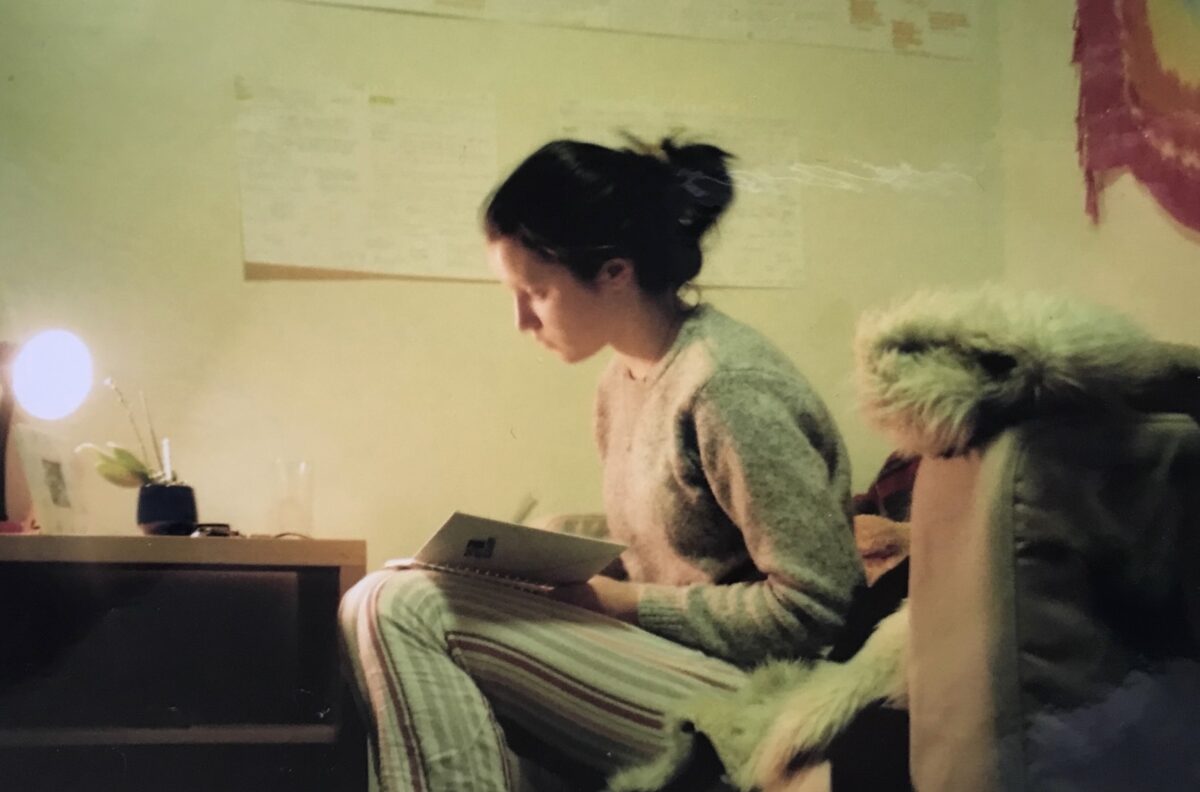By Maisie Jennings
It felt like the perfect time to revisit the writing of Joan Didion during the lazy, early September heatwave. Didion’s elliptical, startling vignettes of the American cultural landscape in the 1960s and ‘70s evoked the sense of a long, sultry summer just about to burn out. So it began — my daily routine of sitting in the garden, chain-smoking, and flicking through the terse pages of The White Album.
I first discovered Didion two years ago; she would die only a few months later. A friend had lent me a copy of Play It As It Lays (inadvertently stolen, I should admit, as it still sits on my bedside table), and it unnerved me in the acutely exciting way that marks a budding new obsession. Didion’s forensic prose balances the banal and tragic on the blade of a scalpel – cutting through the glamorous veneer of Hollywood, rock n’ roll, and the East Coast. “We tell ourselves stories in order to live.” is how Didion begins The White Album, a collection of essays that curate the zeitgeist of her native California and explore her own nervous breakdown. In one apt sentence, she exposes the flimsiness of human perception and explores the raw, essential process of storytelling. If stories are largely understood as pieces of description written toward some climax or another, Didion’s writing oscillates boredly along a constant precipice. Her narration exudes a withering apathy towards a period of massive cultural upheaval.
It’s this distinctly female literary apathy that interested me in my first reading of Play It As It Lays. Maria Wyeth, Didion’s jaded protagonist, is a C-list Hollywood actress — revealing, through flashbacks, a life of beach house parties and barbiturates, a failed marriage, and a hospitalised daughter. She expresses a bored, shallow nihilism; Maria is at the whims of the ‘game’ of life, which she views with the same easy carelessness as her frequent gambling in casinos. It’s clear, however, that Maria’s nullified existence is incited by her manipulation by men. The most disturbing scene in the book occurs when Maria’s husband coerces her into getting a backstreet abortion, which unravels her sense of reality in a blur of nightmares and hallucinations. Didion explores how Maria’s life is totally disembodied because she is denied any control over her own body.
At the same time, Maria makes no effort to escape her gilded cage, in fact, she endeavours to maintain all the niceties of being a suburban housewife. This is, in part, informed by the privilege apathy requires. Maria is so ambivalent towards suffering, especially her own, because the comfort of wealth exceeds the desire for change. In Ottessa Moshfegh’s 2018 novel, My Year of Rest and Relaxation, a similarly beautiful, wealthy narrator pharmaceutically induces a year-long coma in an attempt to reset her stagnated life. Like Maria, the unnamed narrator’s apathy manifests in an inert, disembodied state.
I think this is a stark contrast to the excessive physicality expressed by disaffected, male literary figures. It must be said that men in fiction are constantly apathetic, and they become literary rock stars to swathes of teenage existentialists. Novels such as The Catcher in the Rye, Fight Club, Albert Camus’ The Stranger, and the literary oeuvre of Bret Easton Ellis all depict brooding, uncaring male protagonists – seeing the world and its establishments as pointless and inconsequential. Obviously, it follows that there’s no alternative other than to get recklessly pissed off. These alienated men exercise their apathy with a masculine heavy hand; they pursue and abandon sexual relationships, seek out violent altercations, kill whoever they please, and occasionally engage in acts of depraved brutality. Rather than being forced into a placated, disinterested state like Maria Wyeth – their apathy is indulgent, selfish, and expressed through physical agency. While Maria’s apathetic outlook is deeply repressive, theirs is an anti-establishment cri de coeur.
This raises a number of feminist issues. Ostensibly, writing either apathetically as a woman, or writing apathetic women, seems somewhat anti-feminist. Indeed, Didion scathingly criticised second-wave feminism in a 1972 New York Times essay – declaring the feminists of her day as immature and misguided. Moreover, writing about women who do nothing and stand for nothing directly opposes the strong-willed female rebels of feminist literary interpretation. Perhaps representations of female apathy are not feminist at all, not even implicitly, but there is, to me, undeniable value in writing women who are complacent, shallow, and sometimes caustic. Didion didn’t spark revolutions, she observed them, and she didn’t write on behalf of womankind, she wrote for herself. In writing, and indeed reading, about apathetic female characters, the notion of a singular, universal ‘female experience’ is challenged. So, I suppose I’m urging, without a shred of apathy, for you to pick up a Didion book, or two.

